Presentation
This young man recalled a history of trauma. He presented with pain and swelling in the left lower leg.
Patient Data
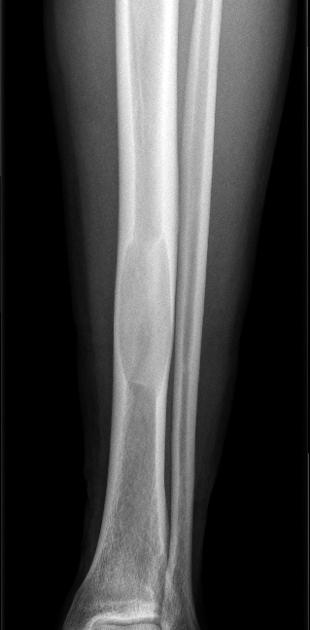
A lytic lesion is demonstrated in the left lower tibial diaphysis with ground-glass appearance, endosteal thinning of the cortex, and some ballooning of the shaft. No periosteal reaction is seen.
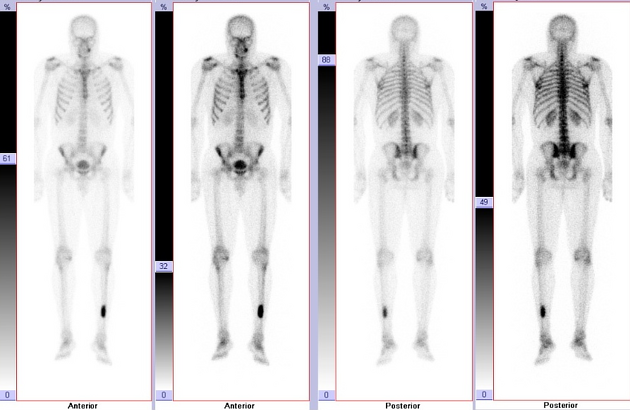
Three phase dynamic bone scintigram (only delayed images shown here) demonstrates a hot spot in the left tibia caused by increased uptake of the radioisotope tracer technetium-99m methylene diphosphonate (99m Tc MDP). The increased uptake is already visible in the early phase.
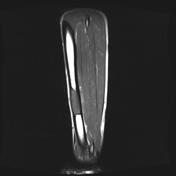

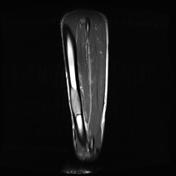

Magnetic resonance imaging (MRI) shows typical features with a low-to-intermediate signal intensity equal to that of muscle on T1-weighted images in the tibial shaft, with endosteal thinning of the cortex and no periosteal or surrounding soft-tissue changes. T2-weighted images also show low signal intensity owing to the high content of collagen and bone. A mild and homogeneous enhancement pattern of the lesion is seen after gadolinium.
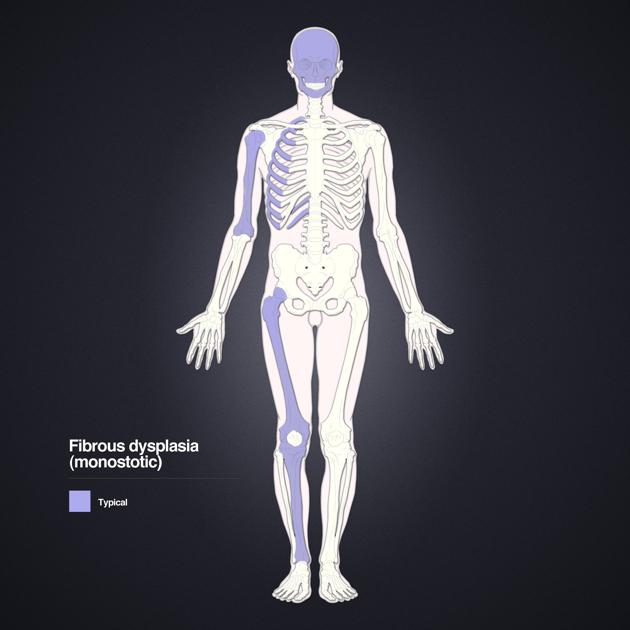
Distribution of monostotic fibrous dysplasia. Layout and distribution: Frank Gaillard 2012, Line drawing of skeleton: Patrick Lynch 2006, Creative Common NC-SA-BY
Case Discussion
Fibrous dysplasia is a skeletal developmental anomaly of the bone-forming mesenchyme that manifests as a defect in osteoblastic differentiation and maturation. Virtually any bone in the body can be affected. It is a nonhereditary disorder of unknown cause.
In this case the diagnosis is straightforward as typical features are present. X-ray is still the examination of first choice. For postoperative follow-up, gadolinium-enhanced MRI can be useful in demonstrating the proliferation of fibrocellular tissue.




 Unable to process the form. Check for errors and try again.
Unable to process the form. Check for errors and try again.